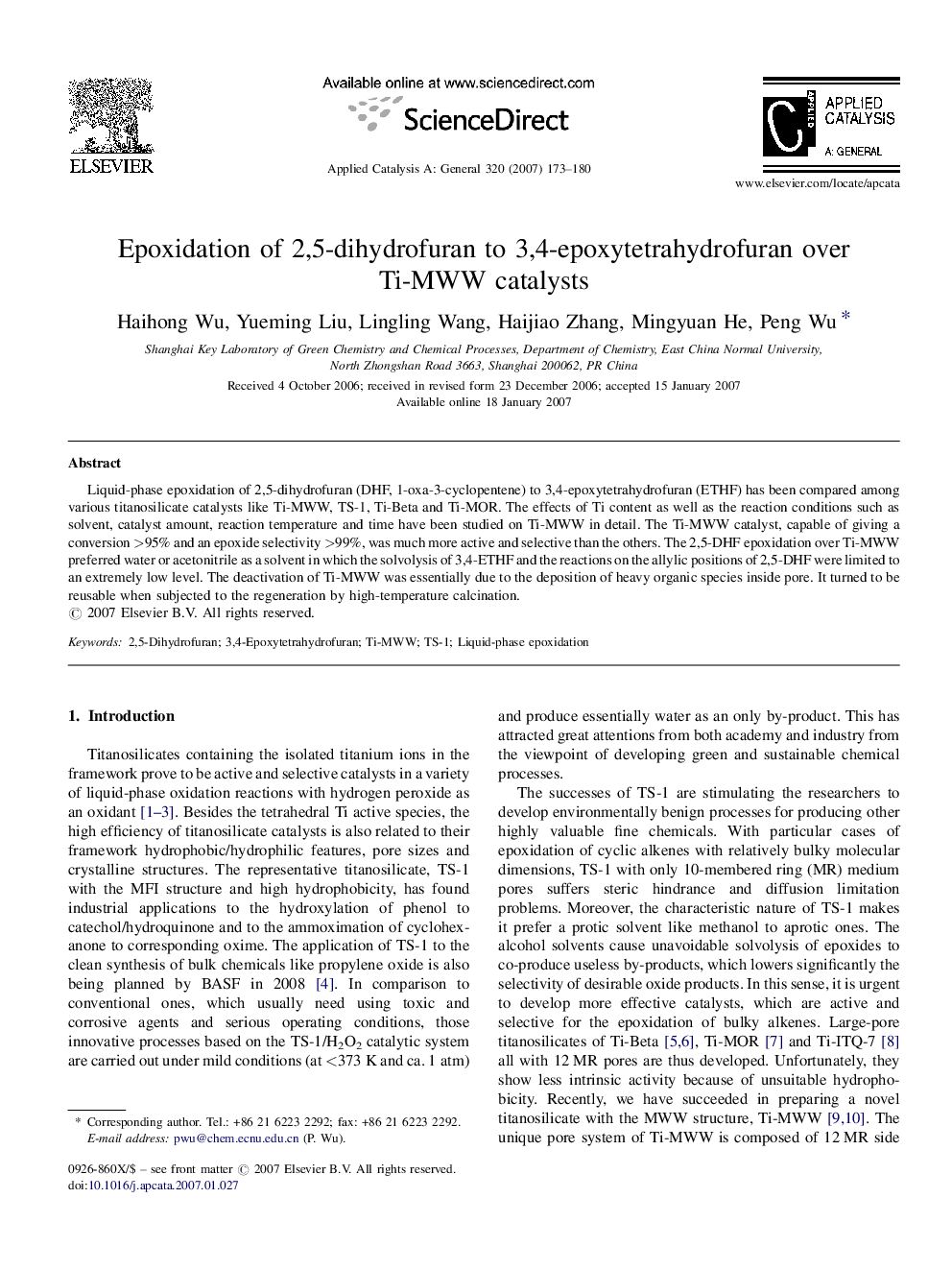| Article ID | Journal | Published Year | Pages | File Type |
|---|---|---|---|---|
| 44432 | Applied Catalysis A: General | 2007 | 8 Pages |
Liquid-phase epoxidation of 2,5-dihydrofuran (DHF, 1-oxa-3-cyclopentene) to 3,4-epoxytetrahydrofuran (ETHF) has been compared among various titanosilicate catalysts like Ti-MWW, TS-1, Ti-Beta and Ti-MOR. The effects of Ti content as well as the reaction conditions such as solvent, catalyst amount, reaction temperature and time have been studied on Ti-MWW in detail. The Ti-MWW catalyst, capable of giving a conversion >95% and an epoxide selectivity >99%, was much more active and selective than the others. The 2,5-DHF epoxidation over Ti-MWW preferred water or acetonitrile as a solvent in which the solvolysis of 3,4-ETHF and the reactions on the allylic positions of 2,5-DHF were limited to an extremely low level. The deactivation of Ti-MWW was essentially due to the deposition of heavy organic species inside pore. It turned to be reusable when subjected to the regeneration by high-temperature calcination.
Graphical abstract3,4-Epoxytetrahydrofuran is produced effectively, selectively and reproducibly through the liquid-phase epoxidation of 2,5-dihydofuran with H2O2 as an oxidant in the presence of water or acetonitrile over Ti-MWW catalysts. Ti-MWW is superior to conventional titanosilicates because it is capable of suppressing the side reactions such as solvolysis of oxide and allylic reactions. Figure optionsDownload full-size imageDownload as PowerPoint slide
